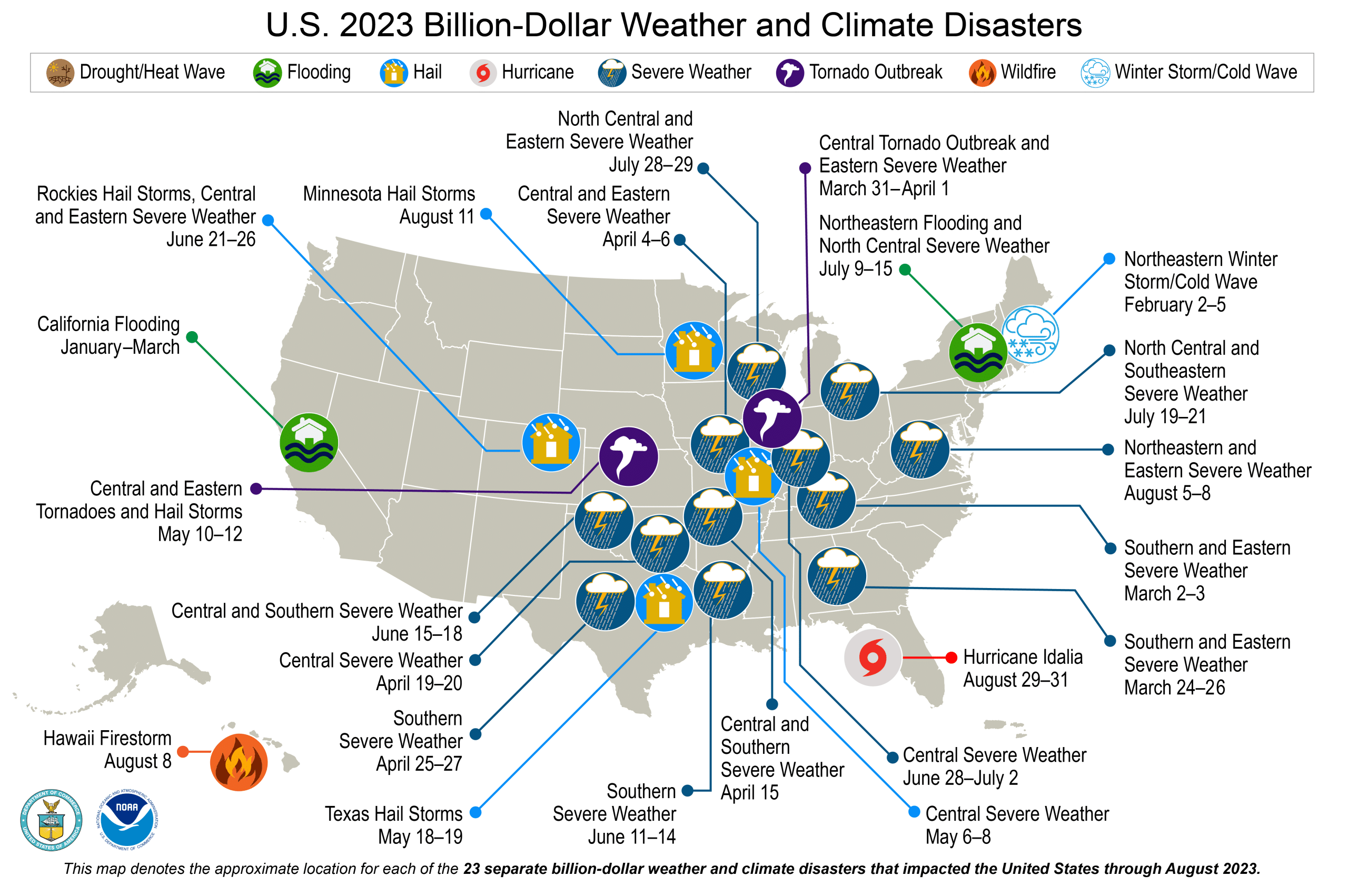Natural disasters cost the US more than $57.6 billion so far this year. The figure does not include major events such as August’s Tropical Storm Hilary, as the economic damages are still being assessed.
—
Between January and September 2023, the US has experienced 23 natural disasters that have cost at least $1 billion, breaking the precedent record set in 2020, the National Oceanic and Atmospheric Administration (NOAA) said on Monday.
According to the report, billion-dollar extreme weather events this year included two flooding events, 18 severe storms, one tropical cyclone, one wildfire, and one winter storm event. Combined, these disasters claimed 253 lives and had “significant” economic repercussions on the impacted areas, with total costs exceeding $57 billion.

Map of billion-dollar natural disasters to hit the US in 2023. Image: NOAA
The figure does not include all major disasters as economic damages from some events are still being assessed. A notable absence from the list is Tropical Storm Hilary, a potent Category 4 hurricane that hit the Pacific Coast of Mexico, the Baja California Peninsula, and the Southwestern US United States last month, bringing record-breaking rainfall in four US states.
Last year was the nation’s third-costliest year ever for climate disasters. A total of 18 major climate disasters collectively racked up $165 billion in damages and claimed 474 lives. Hurricane Ian alone cost the nation about $112.9 billion.
Since 1980, when monitoring began, the US has sustained 371 billion-dollar natural disasters, with costs exceeding $2.615 trillion, according to NOAA’s calculations.
“Exposure plus vulnerability plus climate change is supercharging more of these into billion-dollar disasters,” Adam Smith, the NOAA applied climatologist and economist who tracks the billion-dollar disasters, told AP. He added that, with the climate crisis intensifying rapidly, he does not believe the new record set this year will last long.
A Record-breaking Year
This summer has broken several records. Not only was summer 2023 the hottest on record globally after June, July, and August broke the record for the warmest months ever recorded. This summer, sea and ocean temperatures also reached their warmest surface temperatures in history.
August as a whole saw the highest global monthly average sea surface temperatures ever recorded across all months, while daily temperature records were broken every day from July 31 to August 31, according to Copernicus data. In places like Florida, ocean temperatures surpassed the 38C (100F) mark, adding to previous warnings over warming water putting marine life and ecosystems in peril. Meanwhile, the Mediterranean Sea’s surface temperature hit 28.7C (83.7F), the highest median recording since at least 1982.
Samantha Burgess, deputy director of Copernicus – the EU’s Earth observation agency, said that until we stop emitting greenhouse gases, the world will continue to experience “more climate records” and “more intense and frequent extreme weather events.”
Yet evidence suggests that we are far from reaching net zero targets, with carbon dioxide (CO2) emissions not expected to peak until 2025. In fact, atmospheric CO2 reached record levels this summer, peaking at 424 parts per million (ppm) in May, more than double what they were before the onset of the Industrial Revolution in the 19th century. A study published in June in the scientific journal Nature even suggested that as much as 90% of the world’s top-35 polluting countries – which together accounted for 82% of global greenhouse gas emissions in 2019 – are “unlikely” to achieve their net-zero targets.
You might also like: Top 6 Environmental Issues the US Is Facing in 2023


















